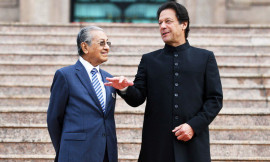
What was the applicable duty on these 313 tariff lines before signing the CPFTA-II? Does China import these products and does Pakistan have any capability to export them? What are the most promising export opportunities for Pakistan and how can we capitalise on them?
The applicable duty on these 313 products ranged from 3.5 to 35 per cent, which has now been brought down to zero, and these products do form an essential part of China’s import bucket. In fact, China imported 311 out of these 313 tariff lines, within the last three years. In 2018 alone, China imported about $67 billion worth of goods across 301 tariff lines from within this group.
Pakistan, on the other hand, exported 167 of these tariff lines to the world in 2018, accounting for more than a quarter of its exports, and 86 tariff lines to China, claiming 47 per cent of its China-export bucket. Our exports to the world signify that we do have manufacturing capacity for these products, and we are competitive enough to export, whereas our exports to China further imply that we already have an established Chinese market in these categories.
There are two types of trajectories that can be taken from here: expand the volume of exports in the existing product lines or expand and diversify our product offering to China to include products not previously exported.
It is interesting to note that 95 per cent of our exports within these 86 lines concentrated only on 10 products, belonging to four categories: cotton yarn; apparel and clothing accessories; sheep and goat leather; and frozen flat fish. Therefore, while all these 86 lines would immediately benefit from zero duty, the most benefit will be enjoyed by these ten products. However, without reversing the declining cotton crop or reviving the struggling textile industry, even cotton yarn or apparel exports are not going to be a win.
The real opportunity therefore would be to use the concessions to expand and diversify our export offering. Looking within these 313 tariff lines, the top Chinese imports with about $35 billion import market do include promising opportunities such as the $5.5 billion gear shifts of motor vehicles with previously 10 per cent duty; $4.2 billion frozen meat with 6 per cent duty; $2.6 billion food preparations with 18.4 per cent duty; billion dollar-markets for cherries and footwear with previously 5 per cent duty, etc. It is now for the private sector to explore these areas and focus on new product markets that have opened up.
The government also needs to put its act together. It needs to spread awareness and provide diagnostics especially around these massive new promising segments. Pakistan, for instance, does export frozen meat, food preparations and milk and cream (in solid forms) to the world, but not to China. There is a need to explore why not. If there are any non-tariff barriers, those need to be addressed. Similarly, for products like gear shifts and auto parts, where we have the manufacturing footprint but not exports, there is a need to use the newly-developed special economic zones (SEZs) to bring in investment and technology to plug into global value chains in the automotive industry.
If we do it right, there is no reason why Pakistan cannot break into the big Chinese market and become an important trading partner with China.
Published in The Express Tribune, January 21st, 2020.
Like Opinion & Editorial on Facebook, follow @ETOpEd on Twitter to receive all updates on all our daily pieces.




















1714029027-0/Tribune-Collage-Feature-Images-(11)1714029027-0-270x192.webp)
1714027629-0/Ranbirtransformation-(1)1714027629-0-270x192.webp)























COMMENTS
Comments are moderated and generally will be posted if they are on-topic and not abusive.
For more information, please see our Comments FAQ